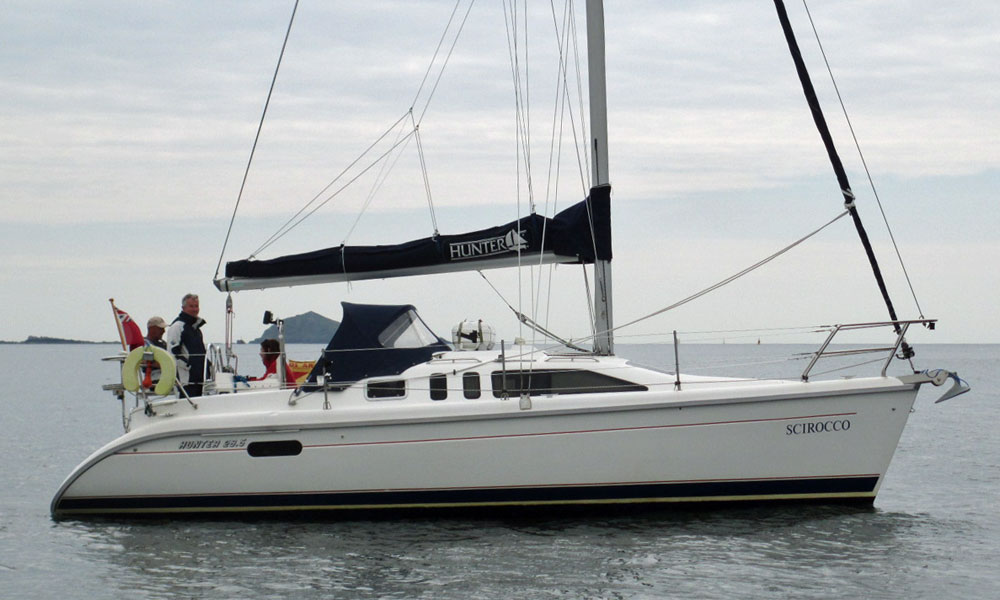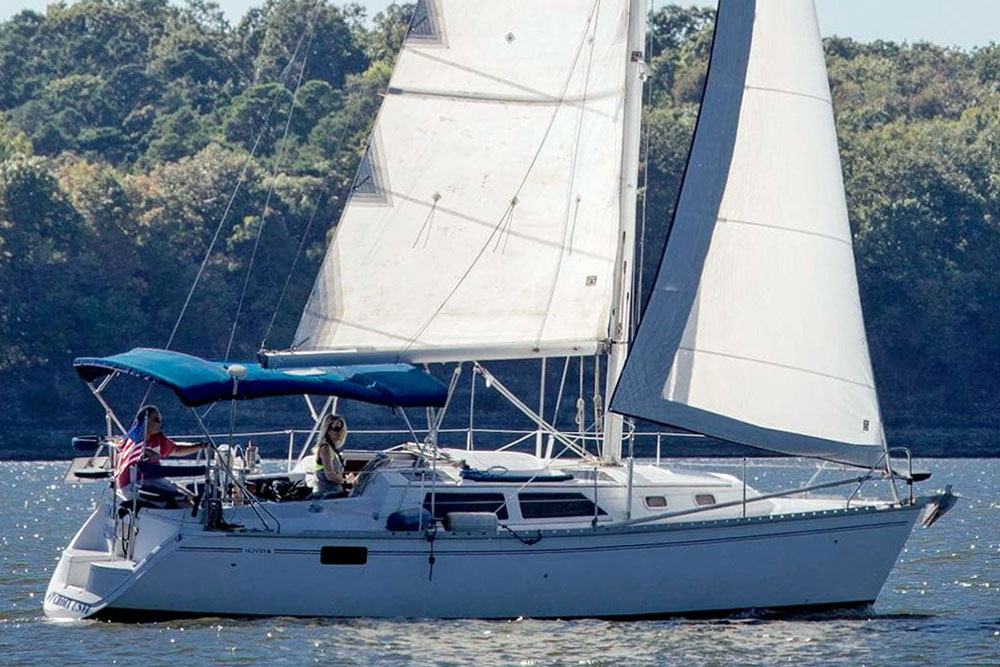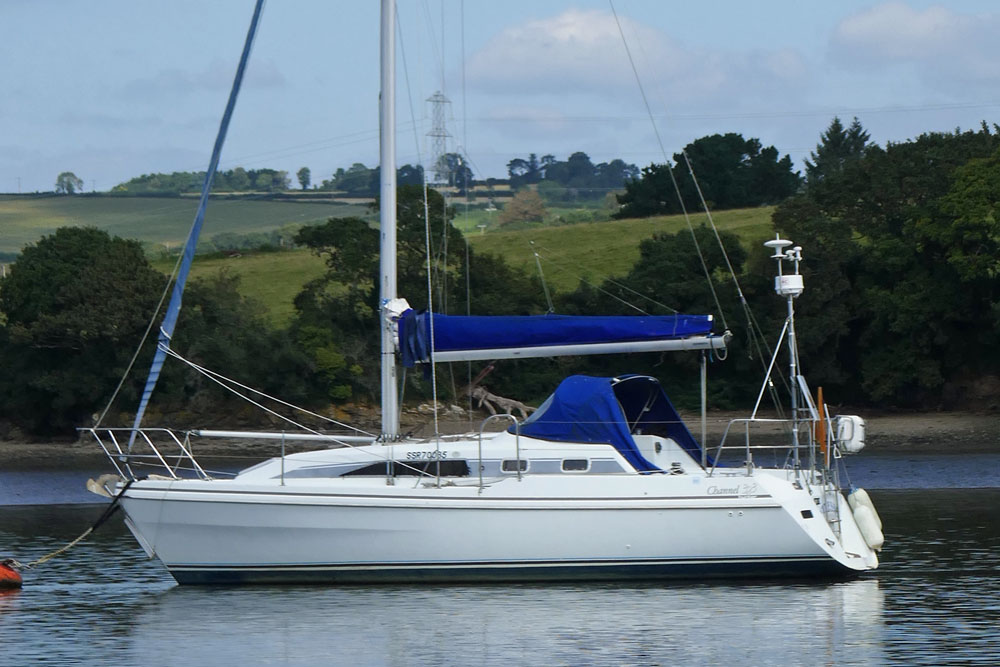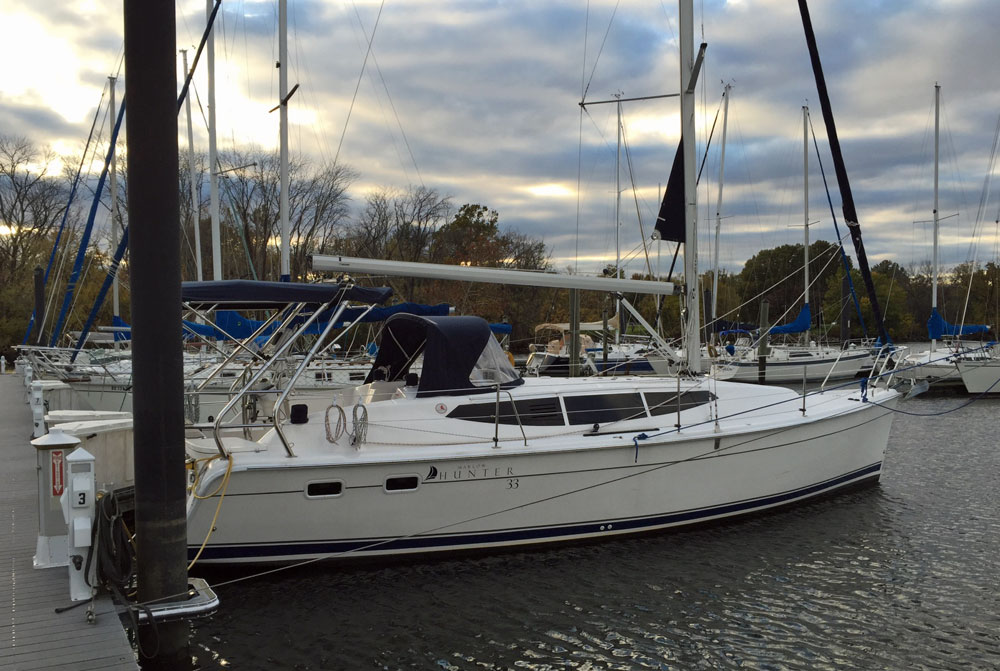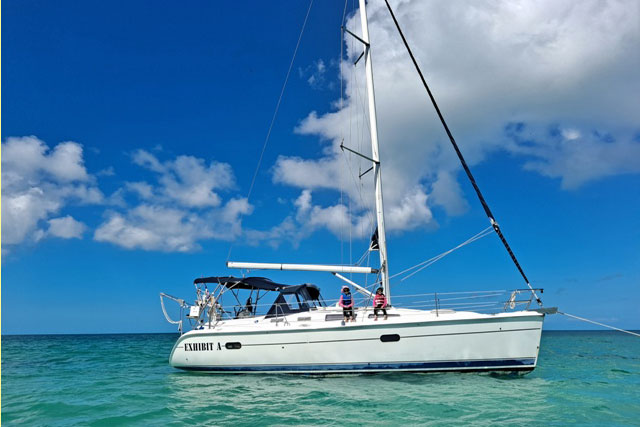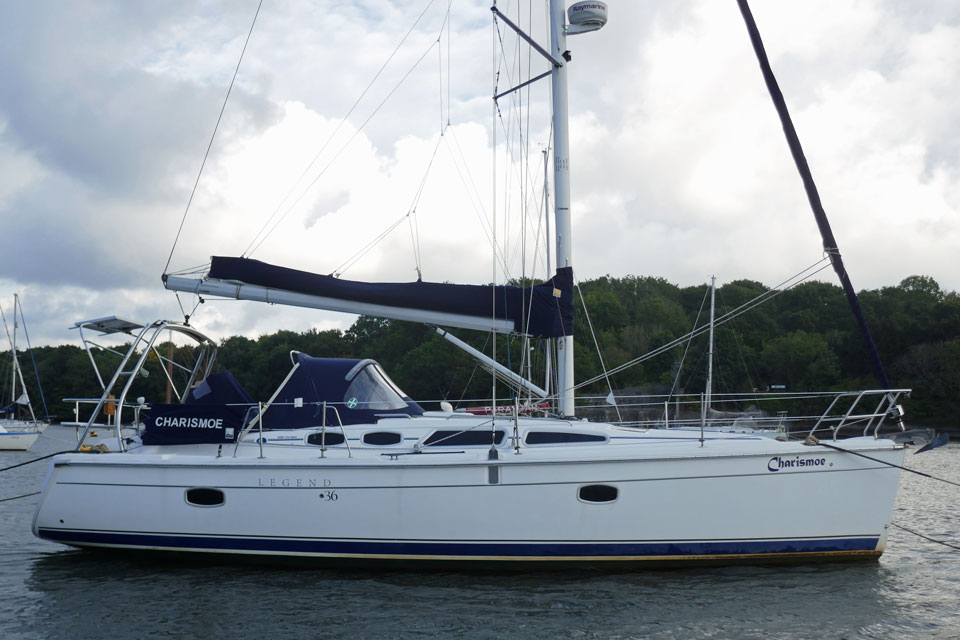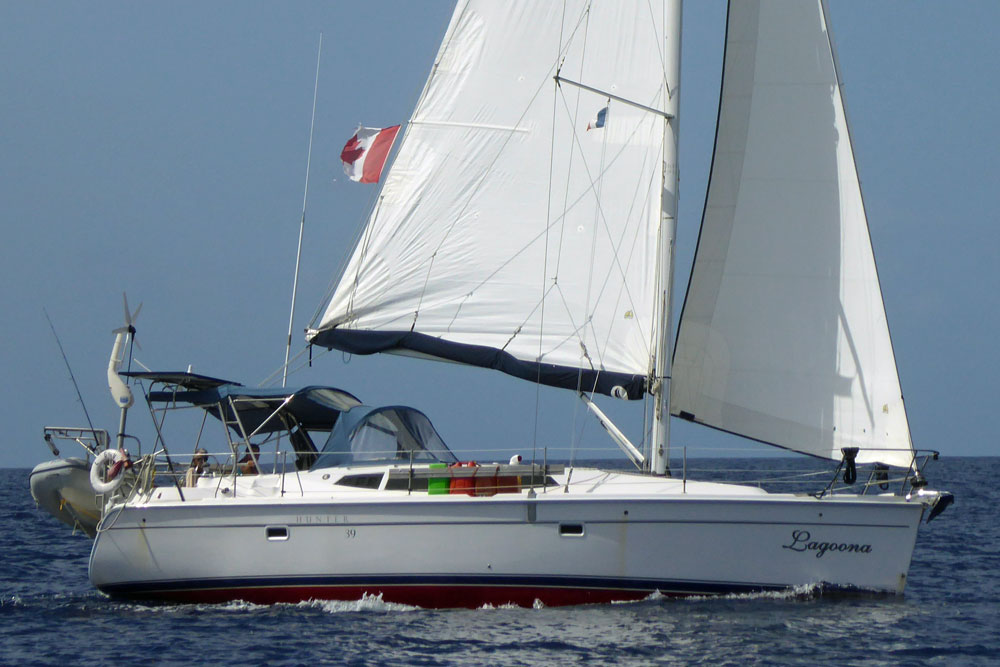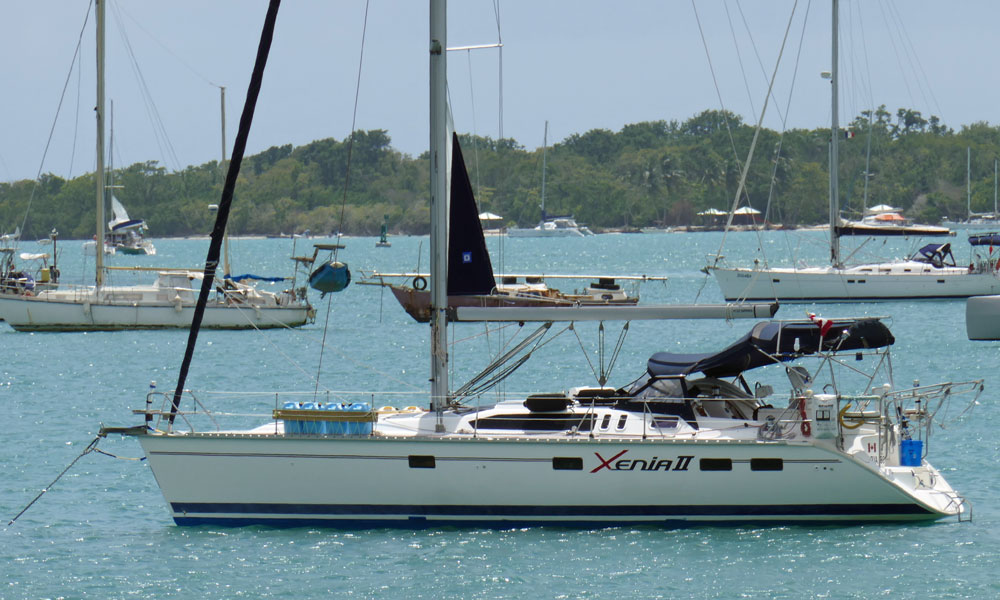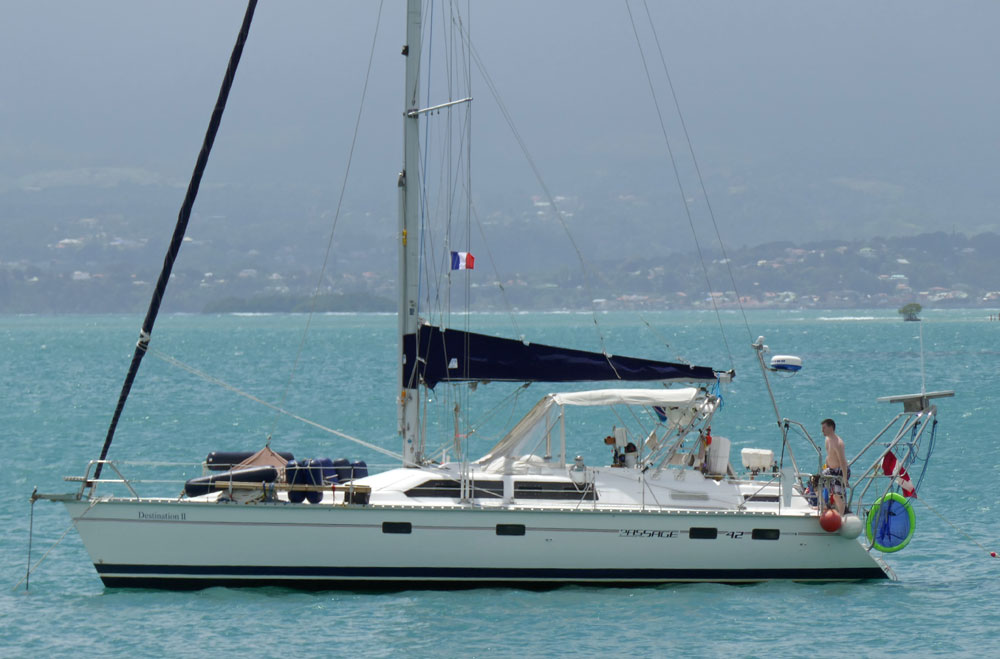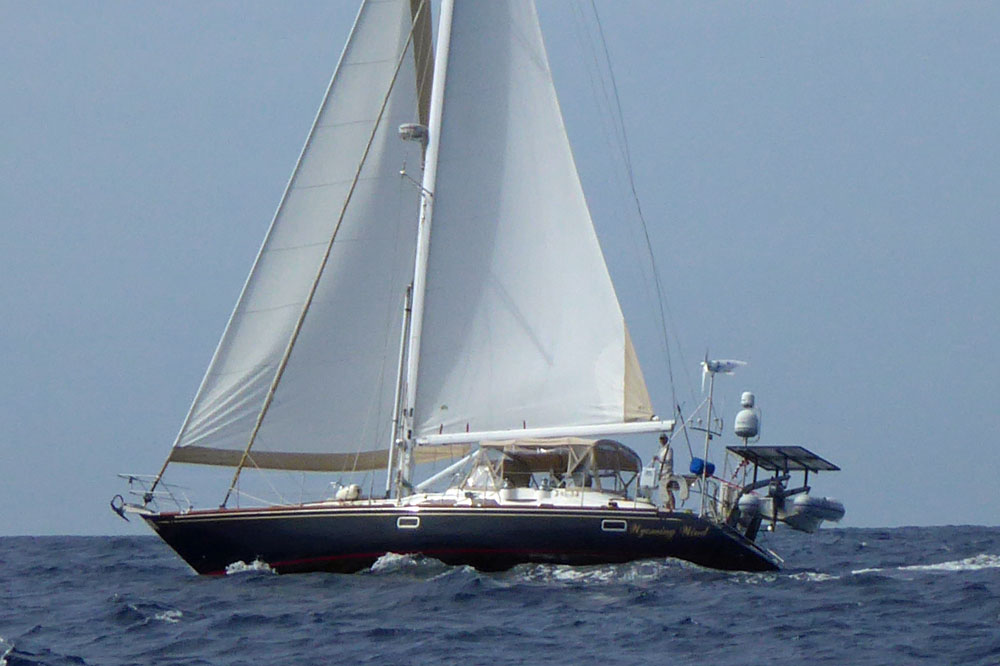- Home
- Cruising Yachts 30' to 35'
- Hunter 31 Sailboat
The Hunter 31 Sailboat
Specs & Key Performance Indicators
The Hunter 31, a B&R rigged masthead sloop, was designed by Cortland Steck and built in the USA by Hunter Marine.
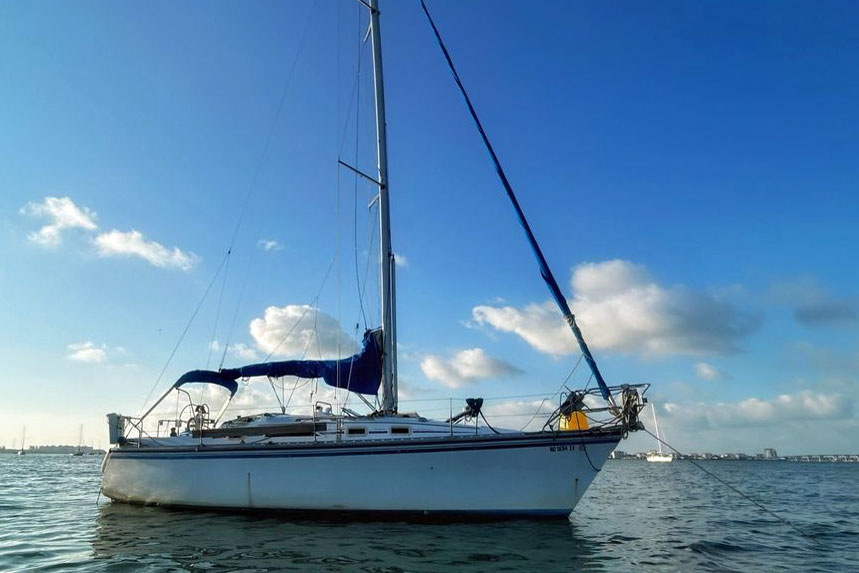 The Hunter 31
The Hunter 31Published Specification for the Hunter 31
Underwater Profile: Fin keel & spade rudder
Hull Material: GRP (Fibreglass)
Length Overall: 31'4" (9.6m)
Waterline Length: 26'3" (8.0m)
Beam: 10'11" (3.4m)
Draft: 5'3" (1.6m)
Rig Type: B&R
Displacement: 9,700lb (4,400kg)
Ballast: 4,000lb (1,814kg)
Designer: Cortland Steck
Builder: Hunter Marine (USA)
Year First Built: 1983
Year Last Built: 1987
Published Design Ratios for the Hunter 31
Sail Area/Displacement Ratio: 16.2
Ballast/Displacement Ratio: 41.2
Displacement/Length Ratio: 239
Comfort Ratio: 22.4
Capsize Screening Formula: 2.1
Summary Analysis of the Design Ratios for the Hunter 31
1. A Sail Area/Displacement Ratio of 16.2 suggests that the Hunter 31 will, in the right conditions, approach her maximum hull speed readily and satisfy the sailing performance expectations of most cruising sailors.
2. A Ballast/Displacement Ratio of 41.2 means that the Hunter 31 will stand up well to her canvas in a blow, helping her to power through the waves.
3. A Displacement/Length Ratio of 239, tells us the Hunter 31 is a moderate displacement cruiser, which means she'll carry all your cruising gear without it having a dramatic effect on her performance. Most of today's sailboats intended for offshore cruising fall into this displacement category.
4. Ted Brewer's Comfort Ratio of 22.4 suggests that crew comfort of a Hunter 31 in a seaway is similar to what you would associate with the motion of a coastal cruiser with moderate stability, which is not the best of news for anyone prone to seasickness.
5. The Capsize Screening Formula of 2.1 tells us that a Hunter 31 would not be as good a choice of sailboat for ocean passage-making, owing to the increased risk of capsize in strong winds and heavy seas when compared to a sailboat with a CSF of less than 2.0.
The Hunter 31 Sailboat: A Review
The Hunter 31 is a popular model from Hunter Marine, an American company that has been building quality sailboats since 1973. The Hunter 31 was first introduced in 1983 and was designed by Cortland Steck. It was produced until 1987, when it was replaced by the Hunter 33.5. In 2006, Hunter Marine launched a new version of the Hunter 31, which is sometimes referred to as the Hunter 31-2 or the Hunter 30/31. This boat was designed by Glenn Henderson and was in production until 2014. In this article, we will focus on the original Hunter 31, but we will also mention some of the differences and similarities with the newer model.
The Hunter 31 is a sloop-rigged cruiser that can accommodate up to six people in two cabins and a convertible salon. It has a fin keel, a spade rudder and a single wheel steering system. The boat has a self-tacking jib and an optional in-mast furling system for easy sail handling. The boat also has a Yanmar diesel engine with a low fuel capacity of 12 gallons.
The Hunter 31 is a boat that offers a lot of features and benefits for recreational sailors. Here are some of the main aspects of the boat that you might want to know more about:
Overview
The Hunter 31 is a boat that combines performance, comfort and convenience. It is a boat that can sail well in light to moderate winds, thanks to its efficient hull shape and rig design. It is also a boat that can handle rougher conditions, thanks to its high stability and stiffness. The boat has a PHRF rating of 174, which means it is faster than some of its competitors in its size range.
The Hunter 31 is also a boat that offers plenty of space and amenities for living aboard. It has a beam of 10 feet and 11 inches, which gives it a roomy interior and a wide cockpit. It has two private cabins, one forward and one aft, each with a double berth and storage space. It has a large salon with a U-shaped dinette that can convert into another double berth, a navigation station with an electrical panel and instruments, and a galley with a two-burner stove, an oven, a sink, an icebox and ample counter space. It has a head with a marine toilet, a sink and a shower. It also has plenty of ventilation and natural light, thanks to its numerous ports, hatches and skylights.
The Hunter 31 is also a boat that is easy to operate and maintain. It has a simple and user-friendly layout, with all the controls and lines led back to the cockpit. It has an engine access panel under the companionway steps, which makes it easy to check and service the engine. It has a molded fiberglass hull and deck, which are durable and easy to clean.
Accommodation
The Hunter 31 can sleep up to six people in two cabins and a convertible salon. The forward cabin has a V-shaped double berth with storage drawers underneath, shelves along the hull sides, an overhead hatch and two opening ports. The aft cabin has an athwartships double berth with storage lockers underneath, shelves along the hull sides, an opening port and an overhead hatch. The salon has a U-shaped dinette that can convert into another double berth with storage lockers underneath, shelves along the hull sides, four opening ports and two overhead hatches. The head is located on the port side of the salon, opposite the galley. It has a marine toilet with a holding tank, a sink with hot and cold water, a shower with a sump pump, storage cabinets, an opening port and an overhead hatch.
The accommodation layout of the newer Hunter 31-2 is slightly different from the original model. The forward cabin has more headroom and more storage space than the original model. The aft cabin has less headroom but more floor space than the original model. The salon has a straight settee on the starboard side instead of a navigation station, and a smaller dinette on the port side that can convert into a single berth. The head is located on the starboard side of the salon, opposite the galley. It has a separate shower stall with a folding door, which makes it more spacious and comfortable than the original model.
Hull and Deck
The Hunter 31 has a solid fiberglass hull with a balsa core sandwich construction for the deck. The hull has a moderate displacement of 9,700 pounds and a ballast of 4,000 pounds. The hull has a fin keel with a draft of 5 feet and 3 inches, which gives it good performance and stability. The hull also has a spade rudder with a stainless steel shaft and bearings, which gives it good maneuverability and responsiveness.
The deck of the Hunter 31 is designed for safety and convenience. It has a wide and flat foredeck with an anchor locker, an anchor roller and an electric windlass. It has stainless steel bow and stern pulpits, stanchions and lifelines. It has two dorade vents on the cabin top for ventilation. It has two large cockpit lockers for storage, one on each side of the wheel. It has a transom swim platform with a folding ladder and a shower. It also has a stern rail seat on each side of the cockpit, which provides extra seating and visibility.
The hull and deck of the newer Hunter 31-2 are similar to the original model, but with some improvements and modifications. The hull has a slightly longer waterline length of 28 feet, which increases its speed potential. The hull also has a shoal draft option of 3 feet and 11 inches, which makes it more suitable for shallow waters. The deck has a more modern and sleek appearance, with flush-mounted hatches, recessed handrails and an arch over the cockpit that supports the mainsheet traveler and the optional bimini top.
Mast and Rigging
The Hunter 31 has a sloop rig with a deck-stepped mast and swept-back spreaders. The mast is made of anodized aluminum and has internal halyards and wiring. The mast height is 46 feet and 7 inches, which makes it suitable for most bridges and marinas. The mast also has an optional in-mast furling system for the mainsail, which makes it easier to reef and stow the sail.
The boat has a B&R rig, which is a fractional rig that eliminates the need for a backstay. This allows for a larger mainsail area and a smaller jib area, which improves the boat's performance in light winds and reduces its heeling tendency. The boat also has a self-tacking jib, which makes it easier to tack and trim the sail without changing sheets.
The boat has stainless steel standing rigging and low-stretch running rigging. The boat has two Lewmar self-tailing winches on the cabin top for halyards and reefing lines, and two Lewmar self-tailing winches on the coaming for jib sheets. The boat also has rope clutches, cam cleats, blocks, tracks and cars for adjusting the sails.
The mast and rigging of the newer Hunter 31-2 are similar to the original model, but with some differences. The mast height is slightly lower at 46 feet, which reduces its windage and weight aloft. The mast also has an optional in-boom furling system for the mainsail, which gives it more sail shape control than the in-mast furling system. The boat also has an optional spinnaker or gennaker for downwind sailing.
Keel and Rudder
The Hunter 31 has a fin keel which is bolted to the hull with stainless steel bolts and nuts. The keel draft is 5 feet and 3 inches, which gives it good performance upwind and downwind. The keel also provides stability and balance to the boat.
The boat has a spade rudder with a stainless steel shaft and bearings. The rudder draft is 5 feet, which matches the keel draft. The rudder also provides maneuverability and control to the boat.
The keel and rudder of the newer Hunter 31-2 are similar to the original model, but with some options. The boat has a shoal draft option of 3 feet and 11 inches, which reduces its draft by more than one foot. The boat also has an optional wing keel or twin keels, which increase its stability at low speeds or when anchored.
This article was written with the assistance of Gemini, a large language model developed by Google. Gemini was used to gather information, summarize research findings, and provide suggestions for the content and structure of the article.
Other sailboats in the Hunter range include:
Recent Articles
-
Albin Ballad Sailboat: Specs, Design, & Sailing Characteristics
Jul 09, 25 05:03 PM
Explore the Albin Ballad 30: detailed specs, design, sailing characteristics, and why this Swedish classic is a popular cruiser-racer. -
The Hinckley 48 Sailboat
Jul 09, 25 02:44 PM
Sailing characteristics & performance predictions, pics, specifications, dimensions and those all-important design ratios for the Hinckley 48 sailboat... -
The Hinckley Souwester 42 Sailboat
Jul 09, 25 02:05 PM
Sailing characteristics and performance predictions, pics, specifications, dimensions and those all-important design ratios for the Hinckley Souwester 42 sailboat...

